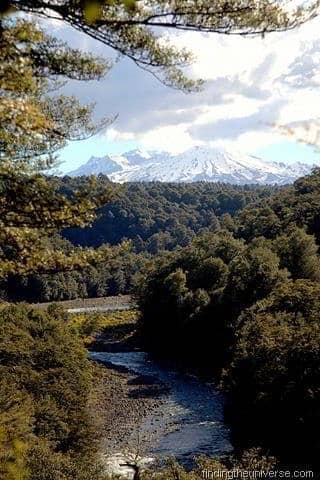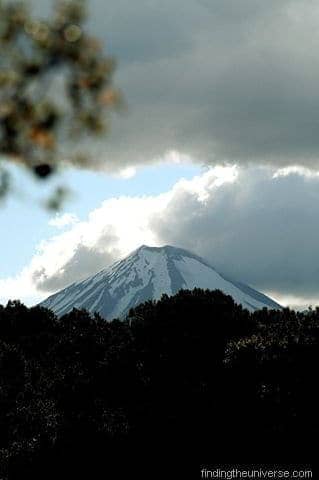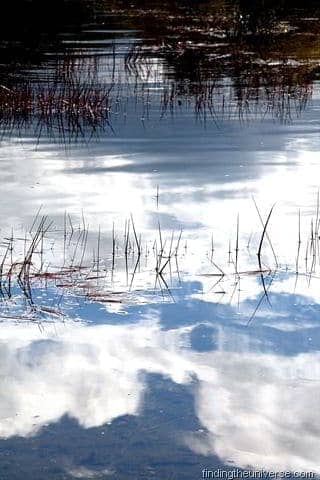Which, as you have probably guessed, is how we have been filling our spare time – exploring the less visited and almost as spectacular parts of the surrounding area, the parts which offer all sorts of things with less people. Not quite St. Marks Square, but close.

What this turned out to be was a narrow gorge that the Tongariro River is forced to pass through on its way to wherever it’s going. The “pillars” are the walls of the gorge, which offer a very narrow gap of only a few metres, into which the water is forced to travel at high speed.
There is, no doubt, some excellent geological reason for the river narrowing at this point – a narrowing which doesn’t last very long, as the river widens out again to it’s natural size after about fifty metres or so, but I couldn’t fathom it. I put it down to the nearby volcanoes, and left it at that.
Geological reasons aside though, this sure was an impressive sight, even if the water levels weren’t really high enough to make it quite as gushing as one would hope for.
The river sweeps down into view, with, obviously, the giant three peaks of the Tongariro National Park dominating the skyline. 
Exploring improbably named gorges is not all we have been doing. We also took a walk around a nearby lake, called Lake Rotopounamu.
This was a rather lovely 6km jaunt under the foot of Mount Pihunga (there is no track to the summit of this 1360m high peak but I’m assured an ascent is 
The walk took us along a number of yellow sanded beaches on the lake shore, past pools of reeds with glorious reflections, before returning us to our starting point. Excellent stuff.
And finally, in our exploratory adventures of late, we took a hike up to the Ketetahi hut from the Ketetahi carpark, which is usually covered as the last 6.5km of the Tongariro Alpine Crossing. This is basically just 6.5km of upwards climb, and we did it because we felt like seeing what the last third of the walk looked like coming from the other way. As it turned out, it was steep, but worthwhile, as we ascended up the side of the Tongariro mountain with the Ketetahi hot springs pouring steam out into the sky above us. Absolutely worth the walk, even if everyone else going the other way looked at us if we were crazy (well, it is usually a one way walk).
So that is how we have been keeping ourselves entertained. Next up, I’m going to be telling you all about one of the world’s most impressive engineering feats, which is just a few kilometres away from where we are living. And after that.. we’re off on a road trip around the Coromandel Peninsula and the rest of the nearby volcanic plateau. Because a month of doing three to four hours of work a day really takes it out of a guy… see you then!
Leave a Reply